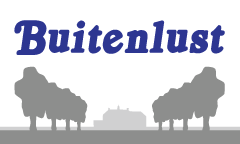The staging yard (and more)
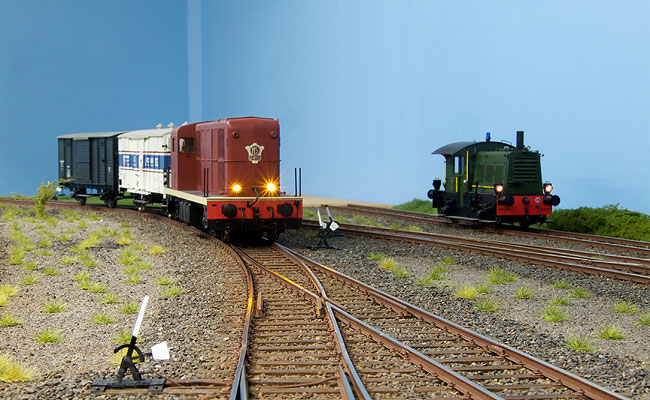
May 2010. The tracks of Baarn NCS station are all nicely finished. The yard has been ballasted with Koemo ballast. It is made from the real material and exactly to scale. I used a mixture of weathered dark grey and rust coloured ballast to create the effect of an old yard. The combination of handlaid track, wooden ties and this ballast creates an asthonishing result.
The track has been weathered and the trackbed has been sprayed with a thin coat of rust. I used Tamiya XF64 (red brown) for this. The dark colour comes pretty close to what older rusty tracks actually look like. The Tamiya paint dries quickly and can easily be applied with an airbrush. The space between the tracks has been filled with cinders and drainage material from Asoa.

The staging yard is about finished. The photo shows it in the middle of the room. After testing has been completed, it will be placed below Baarn NCS on the right hand side. The staging yard has eight tracks, of which six are dead ends. All tracks have been fitted with mutiple occupancy detectors to automate reversing and parking of trains.

I built the staging yards with ready to run track from Peco, the so-called 'code 143 flat bottom track'. Working with this track is reaklly a breeze after hand-laying all the other tracks. When the tracks are in place, the segments are turned over to do the wiring. The popints are powered with the wll-known Tortoise motors. The segments are electrically connected with the universal module connector.

Feedback reporting is done through Loconet feedback decoders. I use standard feedback decopders with 16 contacts and I add mny own 16SD current detection circuit. It does nog only save money, but it also offers the opportunity to connect each contact to another power source. The decoder is fully protected from power surges and short circuits by the optocouplers on the board.
The little gadget on the right provides the power for the Tortoises. Two diodes split 12 Volts AC into -12 and +12 Volts DC. The capacitors smooth out the signle phase rectified voltage. It makes the motors work better and it recudes the humming of the motors. A simple stationary decoder from LDT throws the points by connecting the motor with either +12 Volts or -12 Volts.

An entirely different project is building the NS 162. The model is based on a kit from the United Kingdom, but it takes a lot of extra parts to turn it into an accurate model. The locomotive is waiting for a few addtional parts. It will be finished and painted later this year.
Invisible progress
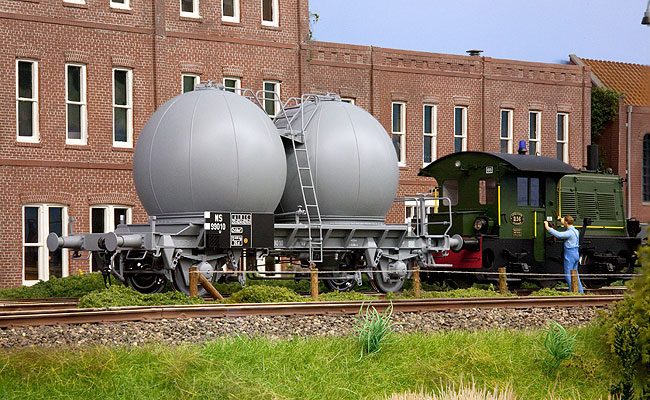
October 2010. A new ballwagon has arrived in Buitenlust. The model by Philotrain shows amazing details. Even the smallest valves have handwheels with spokes. In reality the pressure tank cars - their official name - were used to transport powdered and granular materials. Loading and unloading was done with compressed air and took only a few minutes. The wagons remained in service for over 40 years and could be found all over the country.

Buitenlust saw some building activity as well, but the results are practically invisible. The new modules form the track triangle under the layout. The triangle connects the staging yard with Soest station and via the sand excavation modules with the upper level. The group of modules consists of two identical corner modules, a connecting module and a Y-shaped fork. This group is the fourth group to be built. Another two to go.

I am using the new curved points from Peco here. These points are code 124, while the rest of the tracks are all code 143. The small difference in height is smoothed out with a thin layer of styrene under the points. One side of the triangle is temporaly connected to a standard module. It's place will be take up by the modules of Soest station soon.

Slowly but surely the flat car and the NS 162 diesel are being completed. The work on the models is often delayed for weeks as I have to wait for additional parts or I prefer working on new parts of the layout instead. Just a few last parts are waiting to be added before the models are really finished.

The construction of the next set of modules has begun. These modules form the basis of Soest station. A third module will be added in the corner on the left. It is a pretty complex construction if you put it all together. There is track running behind the background and the corner module has a curved side. It will probably take some time before the trains are running here.
The birth of Soest. And of a locomotive.
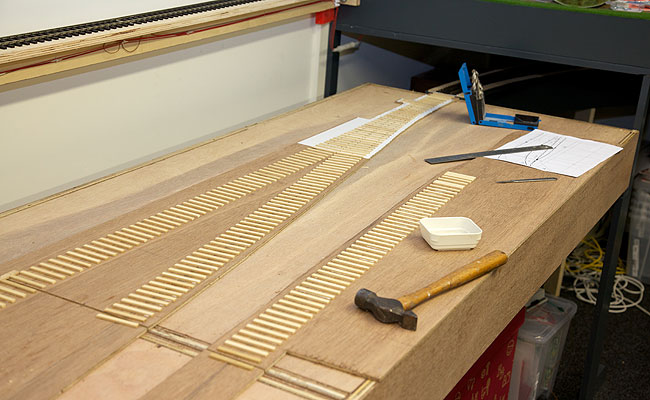
November/December 2010. The fifth set of modules is taking shape. Buitenlust consists of six sets of modules in total, so there is only one set to go after this one. These three modules - better said ‘segments’ as they are not standardised modules - will accommodate the station of Soest. I usually start with marking out the tracks and building the bare modules. While waiting for the wood to construct the backdrop, I laid down the sleepers for the tracks.

The backdrop on this part of Buitenlust is slightly more complex than on the rest of the layout. Behind the backdrop runs the track which connects both levels. The corner module and the backdrop must follow the curve of the hidden track exactly. It is a bit of a carpenter’s job, but the result is definitely worth the effort.

Painting is almost more work than building the contraption. First you have to fill the holes, then paint it with primer twice, sand it down and finally apply two coats of paint. The backdrop gets an even coat of matte blue paint for now. When the landscape has taken shape, it will be replaced by a custom-made photo-print of the real landscape.
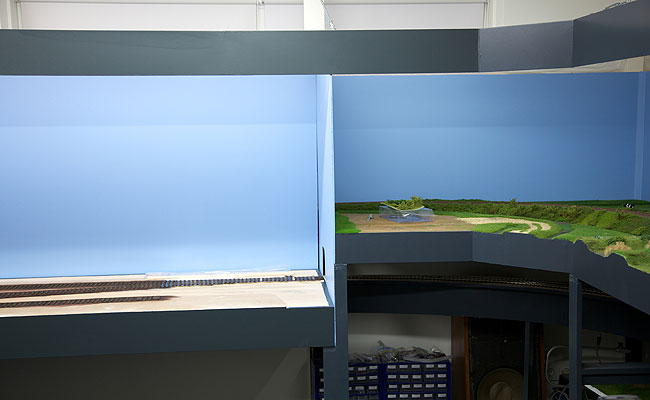
A backdrop provides an optical separation between both levels of the layout. The difference in height is 30 cm. This is the sum of the height of the modules (15 cm) and the minimal clearance for rolling stock (15 cm). The slope is about 13 meters long, which comes down to an inclination of about 2%. Although O gauge locomotives do not have traction tires, their relatively high weight makes negotiating a 2% slope possible.
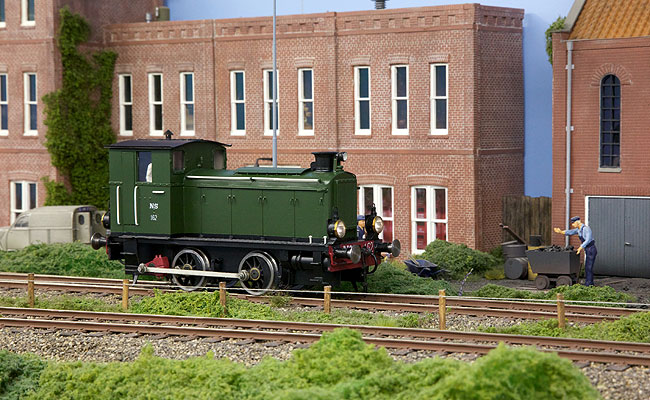
The NS 162 has rolled out of the workshop. I built this Dutch model from a British kit. The model has been changed and improved in numerous ways. The ex-War Department locomotives were used in the north of Holland between 1946 and 1956. The NS 162 survived as the only one of its kind to the present day. The locomotive is currently being restored by the Werkgroep 162.
2010
